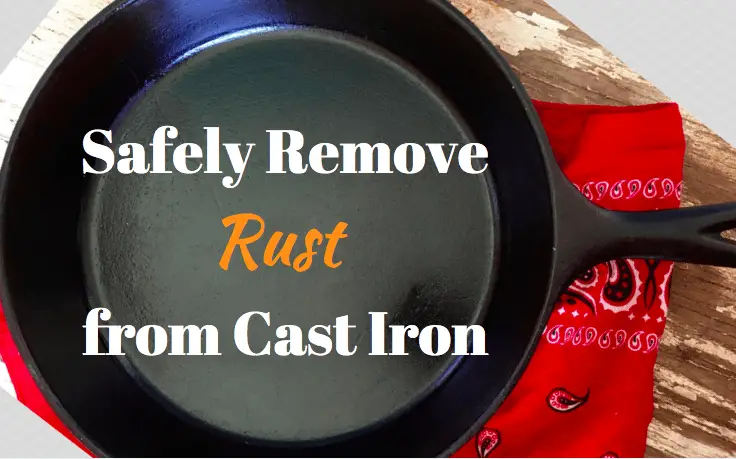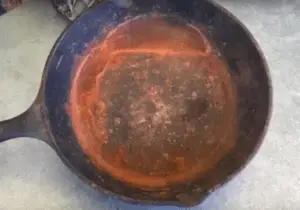How to Safely Remove Rust from Cast Iron

Rust is the dreaded enemy of cast iron. But whether you inherited a rusty piece, found one at a garage sale or accidentally left one out in the elements – as long as it’s quality cast iron made in the USA and there aren’t any cracks or chips… you can bring it back to life
We’ve laid out some steps to get your cast iron back to cooking. And if you haven’t seen it yet, check out our how-to video at the end of this post.

Get the printable guide here: rust care for cast iron
For Minor Rust Care:
- With a wire brush, or drill with a rotary wire brush attachment, thoroughly brush the cast iron piece to remove as much surface debris and rust as possible.
- Rinse the piece well with warm/hot water. Wipe with a clean rag and place on a heat source to dry.
- While the piece is still warm (but able to handle) pour a coarse grain salt or sea salt in the piece. With a half of a potato or piece of leather scrub the cast. Rinse, heat and repeat as needed to pull out the rust and buff any surface area.
- If needed, add a little vegetable oil with the salt for a lubricant, while the piece is warm. The lubricant will help the salt buff out the rust.
For Medium Rust Care:
- Begin with Steps 1 and 2 (above), if you haven’t already done so. While the piece is warm add baking soda and vinegar. Let set 10 – 30 minutes.
- With a sponge, buff the rusted areas. You can slightly heat the cast iron while doing this to penetrate deeper, but do not boil the vinegar.
- Repeat a few times, as needed.
- If you still notice rust (or your elbow grease is running low) you can warm the piece and let it soak in vinegar for 10 to 30 minutes. For stubborn rust you can also let it soak 6- 8 hours.
For Heavy Rust Care:
- Begin with Steps 1 and 2 (from minor rust care), if you haven’t already done so.
- Place the cast iron in the middle rack of a conventional oven with a baking sheet underneath. Set the oven to the self-clean cycle. This will burn off all the old seasoning and build up and leave you with a bare piece of cast iron. The cookie sheet will catch any debris.
- With a wire brush, clean the cast to remove all the debris. Rinse well with warm/hot water. Dry with a clean rag and place on a heat source to dry fully. Now that all the seasoning is removed, you can fully assess the rust damage.
- For minimal rust follow the steps outlined for minor rust care using salt. Repeat as needed.
- For severe rust, use the steps outlined for medium rust care using the baking soda and vinegar. Repeat as needed.
After Rust Removal
- First step- give yourself a pat on the back because you just saved your cast iron’s life with a little love and elbow grease!
- If you didn’t have to go through severe rust removal skip to Step 3. Your cast may be a little rough since you removed all the old seasoning. If so, simply go over it lightly with 80-grit sandpaper just until you get a smooth surface.
- We have created a free guide to help rebuild a good seasoning base. This also includes a sanding guide if you have received a piece of cast iron that is pre-seasoned. If you’re just looking to rebuild seasoning you can skip the sanding steps and use the seasoning and baking steps listed. Flaxseed oil or grapeseed oil are good oils to use when rebuilding seasoning, but olive oil also works well. You can get the free guide here: http://eepurl.com/ckJhmP
Watch us put these steps into action at the chuck wagon…
